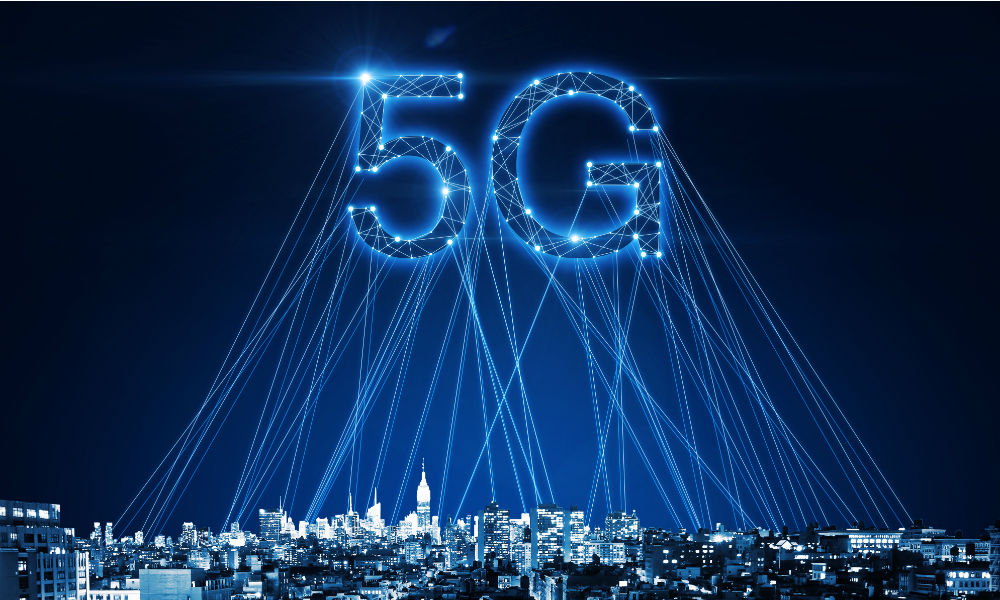
Unlike previous generations of network technology that paved the way for innovations like smartphones and wireless broadband, 5G's tremendous improvements in terms of lower latency, faster transmission speeds, and vastly increased network capacity are throwing open the doors to large-scale enterprise digital transformation.
Already, 5G is capturing the attention of consumer cellular service customers, but with regulators giving away spectrum for free enterprise, adoption of emerging use cases is widely expected to be 5G's killer application.
The fifth-generation cellular technology, which supports multigigabit data rates, 5G's potential speed of 20 Gbps is a significant draw, but its low latency of 1 millisecond or less is even more attractive for enterprise applications as it represents a superior alternative to WiFi and physical LAN cables
Augmented reality, the Internet of Things (IoT), location awareness, and branch connectivity all benefit from 5G, and with built-in security, 5G has the potential to be more secure than its cellular service predecessors.
"Cellular technologies, free spectrum and 5G in specific has many benefits for enterprises, infusing their processes with greater agility, guarantied latency & speed, IT security and efficiency," said Roy Timor-Russo, Chief Revenue Officer at JpU, an enterprise 4G/5G solution SaaS provider. "Think of it as an enterprise's own in-house 5G network that can be adjusted with ease to meet a business's continually changing demands."
Forecasts show private networks will reach 750M connected devices by 2023 and is a preferred choice going forward for enterprises deploying on-premise wireless LAN, and that Private 5G market's forecasted growth at a CAGR 37.8%. This comes as no surprise, as organizations have long wanted a flexible and secure connectivity option for the enterprise, and the features of 5G finally meet that need.
5G services provide less costly and more flexible alternatives to MPLS and other dedicated lines primarily used for latency-sensitive applications, and increased speed and bandwidth make cellular technology a viable option to bring automation to branch offices.
"WiFi networks are often not scalable for continued high performance and security, while private 5G networks offer a myriad of benefits comparatively," said Timor-Rousso, including "60 percent TCO, enhanced security, guaranteed quality of service, native public/private networks crossover, and higher device density are just some of the advantages enterprises can leverage when they adopt 5G networks."
While 5G is reliable, communication service providers (CSPs) are often limited in their ability to innovate and execute because of the static nature of today's network core.
5G requires a hefty investment to reap its full rewards, and the fact that 5G can simultaneously support more connected users and devices than previous cellular technology equates to more vectors of exposure that need to be carefully assessed and monitored.
On top of this, 5G requires network teams to pay close attention to site surveys, as the easiest use cases are venues with open spaces all under one roof.
However, over the past few years, CSPs have been reducing costs and simplifying legacy network infrastructure and operational processes by moving applications into the cloud, and with 5G opening the door to user collaboration with enterprise customers and broader ecosystem, the cloud takes on a whole new level of importance.
By leveraging cloud-native, free cellular spectrum and edge technology, enterprise 5G is being simplified, allowing more organizations to reap the benefits.
"Organizations can utilize cloud-native solutions, such as JpU's architecture, to seamlessly deploy 5G without limitations across bare metal and cloud as a true software product," said Timor-Rousso. "This lets service providers & SI/VARs to deploy it on any cloud, private or public, and deploy it anywhere, centralized or at the edge, using virtual machines or containers, running on the cloud or bare metal. This provides IT the freedom to choose the deployment model and to rearrange the network as a business needs change."
By deploying cloud-based solutions like JpU's, organizations are also able to take advantage of the benefits 5G networks have pertaining to automation and machine learning,
Even prior to the new 5G era, complexity management was a key driver for trends such as automation, and now, 5G and the accompanying surge in enterprise connectivity are rapidly accelerating this trend.
"Automation is everywhere, coupled with AI, and is critical to almost everything given the scale and complexity of today's network," said Timor-Rousso. "With a 5G solution, service providers & SI/VARs can profit from opportunities by using cognitive intelligence such as AI and machine learning, automation, and other web-scale infrastructure advances."
Now, just a year after it was introduced, and much of that dominated by a global pandemic, the industry's hesitation surrounding enterprise 4G/5G has faded away. As they start to take advantage of 5G's multitude of benefits, enterprises are moving forward with 5G networks at the forefront of their minds.
"With such obvious benefits for a service provider, their networks and operations, placing more emphasis on the core will provide the business value they look for as they prepare for full 5G," Timor-Rousso explained. "Solutions like JpU's give organizations a strong, simplified core that is then integrated, deployed and operates on any cloud, allowing them to serve, optimize, innovate, create and compete."
Edited by
Luke Bellos





